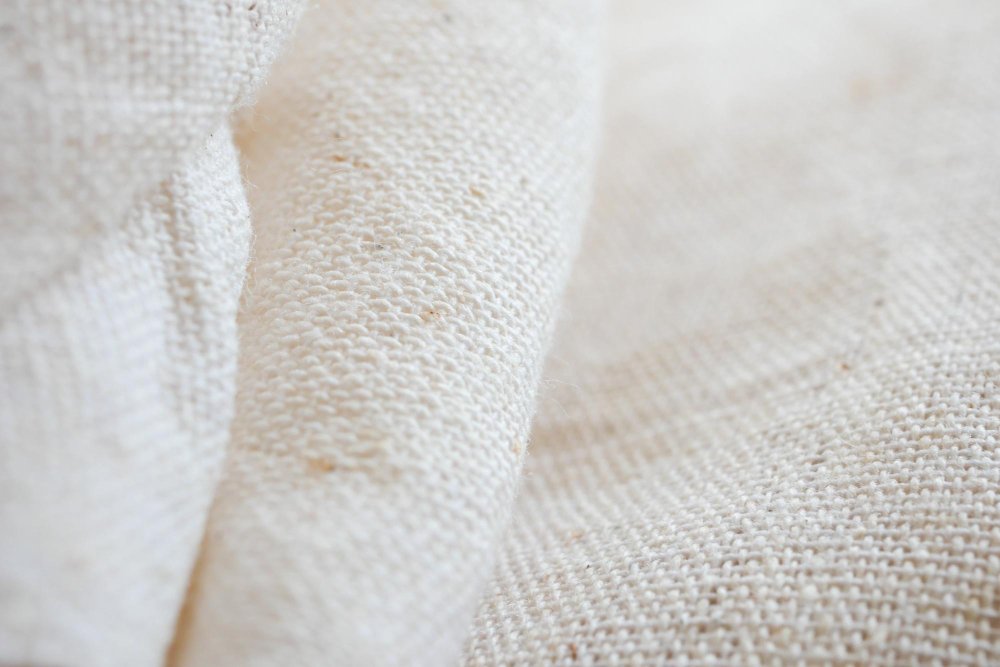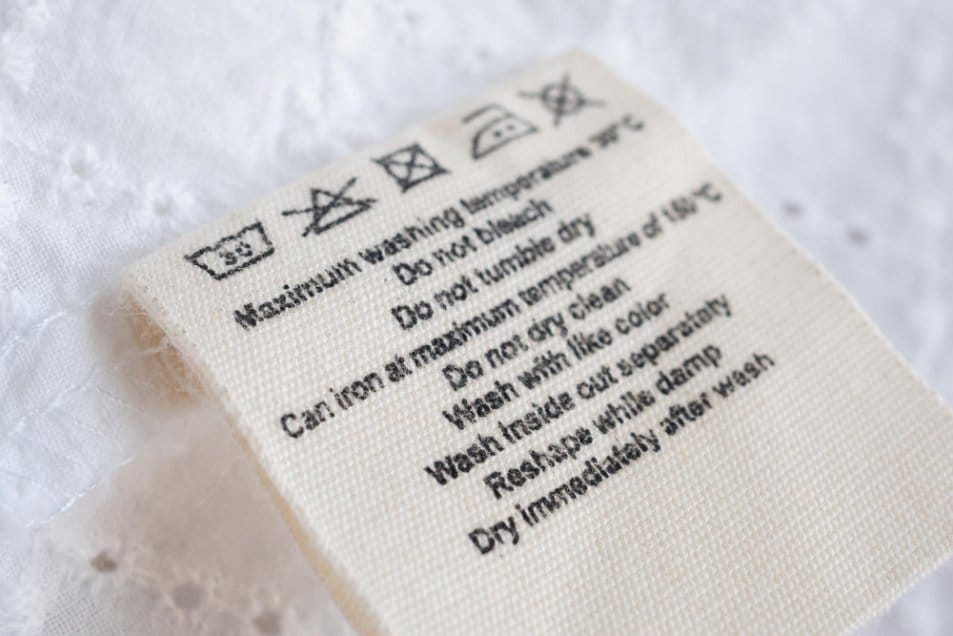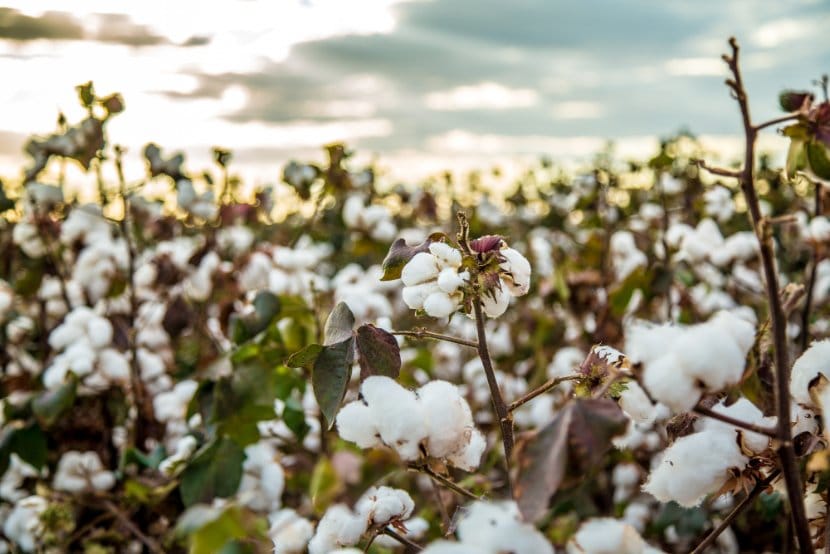Everything you need to know about choosing, using, and maintaining cheesecloth for cooking, crafting, and more
Table of Contents
- What Is Cheesecloth Cotton Fabric?
- History and Origins
- Understanding the Grading System
- How to Choose the Right Grade
- Cheesecloth vs. Butter Muslin
- Cheesecloth vs. Regular Muslin
- Kitchen and Cooking Applications
- Crafting and DIY Projects
- Other Applications
- What to Look For When Buying
- Complete Care and Cleaning Guide
- Cheesecloth Substitutes and Alternatives
- Troubleshooting Common Problems
- Frequently Asked Questions
What Is Cheesecloth Cotton Fabric?
Cheesecloth is a lightweight, loosely woven cotton fabric with a gauze-like appearance. The fabric gets its name from its original purpose: making cheese. When you need to separate curds from whey or wrap cheese during the aging process, cheesecloth does the job perfectly.
The fabric features a plain weave pattern with spaces between the threads. These gaps are just the right size to let liquids drain through while catching solids. Think of it like a very fine net made from soft cotton fibers.
What Makes Cheesecloth Special?
Unlike regular cotton muslin or other fabrics, cheesecloth has several unique qualities:
- Open weave structure: The loose weave lets liquids pass through quickly while trapping solids
- 100% cotton construction: Natural fibers make it safe for food contact and easy to sanitize
- Lint-free when quality made: Good cheesecloth won’t shed fibers into your food
- Breathable and lightweight: Air flows through easily, making it perfect for covering and wrapping
- Available in multiple grades: Different thread counts suit different tasks
Is cheesecloth always cotton? Yes, authentic cheesecloth is made from 100% cotton. You might find synthetic versions marketed as cheesecloth, but these aren’t suitable for food preparation or cooking since they can melt at high temperatures.
History and Origins
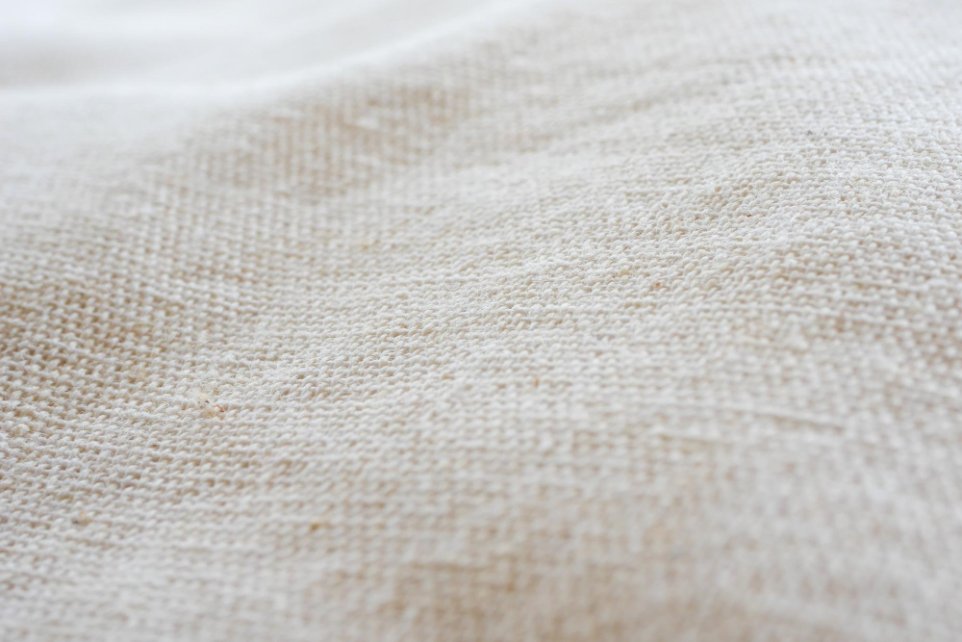
Cheesecloth has been around longer than you might think. The term “cheesecloth” first appeared in English around the 1650s, describing a coarse cotton fabric used for pressing curds during cheese making.
But the use of similar fabrics goes back even further. Ancient Greek cooks used gauze-like cloths for straining liquids and wrapping foods. The practice spread throughout Europe over centuries, with each region developing its own versions.
The Industrial Revolution Changes Everything
Before the 1800s, fine cotton fabrics were expensive and hard to come by. Cheese makers needed an affordable solution. The development of the cotton gin and industrial textile machinery in the 19th century made mass production possible. Suddenly, cheesecloth became widely available and affordable for both commercial cheese factories and home kitchens.
During World War II, cheesecloth found unexpected uses beyond the kitchen. Military forces used it for bandages and even as filter material in gas masks. After the war, food manufacturers continued to rely on it, and the cosmetic industry discovered its usefulness in beauty products.
Today, cheesecloth remains a kitchen staple worldwide, though it has expanded far beyond its original cheese-making purpose.
Understanding the Grading System
Not all cheesecloth is created equal. The fabric comes in different grades, numbered from 10 to 100. The grade tells you about the thread count (how many threads per square inch) and how tightly woven the fabric is.
Here’s what you need to know: higher grade numbers mean tighter weaves and more threads per inch. A Grade 10 cheesecloth has large gaps between threads, while Grade 90 or 100 is almost as tight as regular fabric.
Grade 10
Thread Count: 20 x 12
Best For: Decorations, ghost costumes, rustic wedding draping, covering large containers
Weave: Very open and airy
Grade 40
Thread Count: 24 x 20
Best For: Basic straining, bundling herbs, general kitchen tasks
Weave: Medium-open
Grade 50
Thread Count: 28 x 24
Best For: Cheese making, straining stocks, basic dairy work
Weave: Moderate density
Grade 60
Thread Count: 32 x 28
Best For: Fine straining, yogurt, nut milk
Weave: Tight and durable
Grade 90
Thread Count: 44 x 36
Best For: Soft cheese (ricotta, paneer), fine filtering, professional use
Weave: Very tight, almost solid
Grade 100
Thread Count: 48 x 40+
Best For: Ultra-fine filtering, professional cheese making, butter
Weave: Tightest available
How to Choose the Right Grade
Wondering what grade cheesecloth to buy? Here’s a simple guide:
| Your Task | Recommended Grade | Why It Works |
|---|---|---|
| Making hard cheeses (cheddar, gouda) | Grade 50-60 | Allows good drainage while holding larger curds |
| Making soft cheeses (ricotta, paneer) | Grade 90-100 | Catches fine curds and maintains moisture |
| Straining stocks and broths | Grade 60-90 | Removes particles while letting liquid flow |
| Making nut milk | Grade 90-100 | Filters out all solids for smooth milk |
| Bundling herbs (bouquet garni) | Grade 40-50 | Sturdy enough to hold herbs during cooking |
| Basting poultry | Grade 50-60 | Holds moisture and withstands heat |
| Crafts and decorations | Grade 10-40 | Easy to shape and drape |
Cheesecloth vs. Butter Muslin: What’s the Difference?
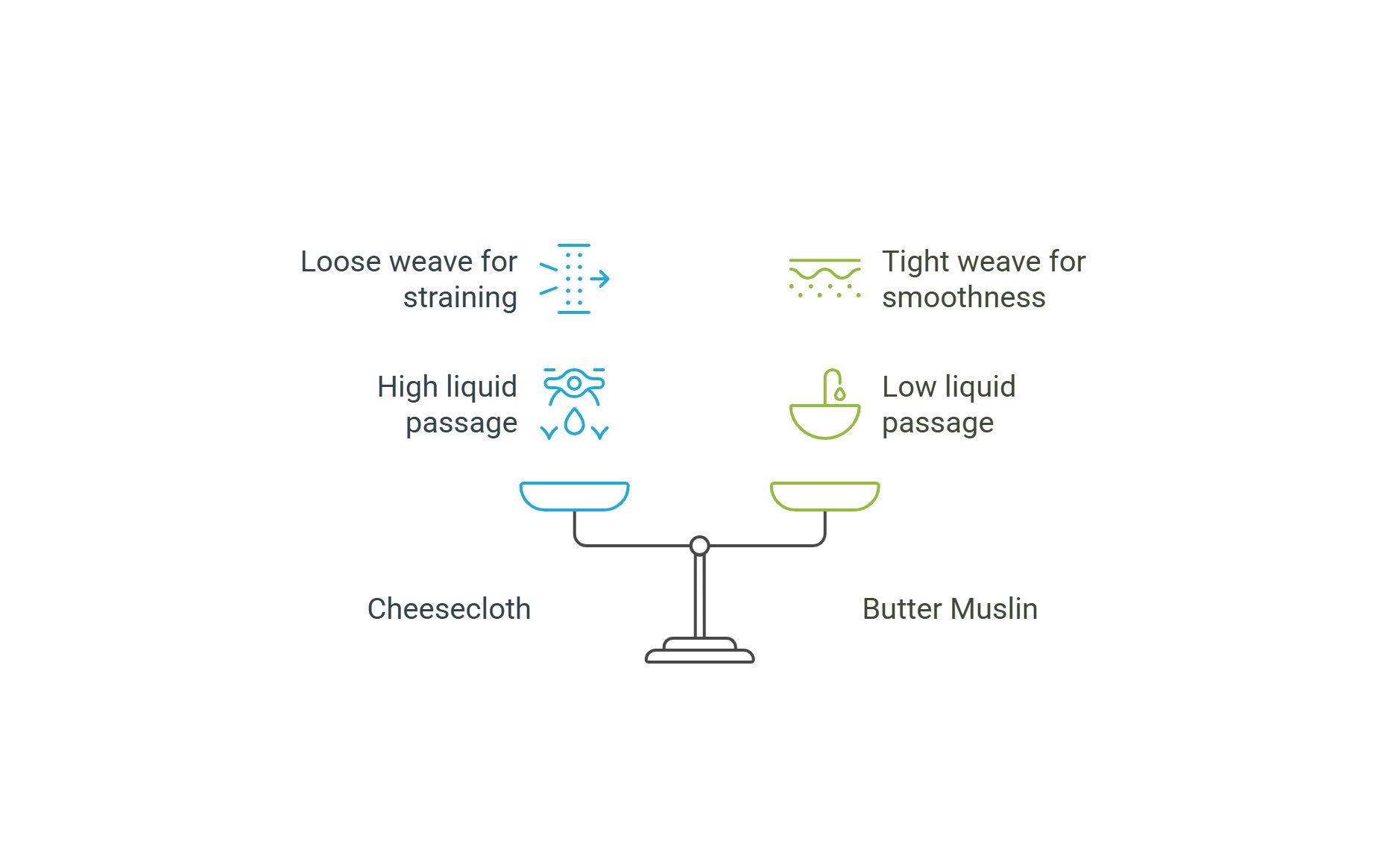
Many people wonder if butter muslin and cheesecloth are the same thing. They’re similar, but there are important differences that affect which one you should use.
| Feature | Cheesecloth | Butter Muslin |
|---|---|---|
| Thread Count | Lower (20×12 to 44×36) | Higher (similar to Grade 90+) |
| Weave Tightness | More open weave | Tighter, finer weave |
| Best For | Hard cheeses, wrapping, bandaging, general straining | Soft cheeses, fine filtering, dairy work |
| Drainage Speed | Faster drainage | Slower, controlled drainage |
| Curd Size It Catches | Larger curds | Smaller, finer curds |
| Durability | Less durable (especially lower grades) | More durable, longer-lasting |
| Price | Usually less expensive | Typically costs more |
When to Use Cheesecloth
Choose cheesecloth when you’re:
- Making hard cheeses like cheddar or gouda (they need better air circulation)
- Lining cheese molds
- Bandaging cheese during aging
- Working with drier cheese textures
- On a budget
When to Use Butter Muslin
Butter muslin is better for:
- Soft cheeses (ricotta, mascarpone, queso blanco)
- Draining yogurt to make Greek yogurt or labneh
- Making plant-based milk (almond, oat, soy)
- Any task requiring very fine filtration
- Projects where you want maximum reusability
Cheesecloth vs. Regular Muslin Cloth
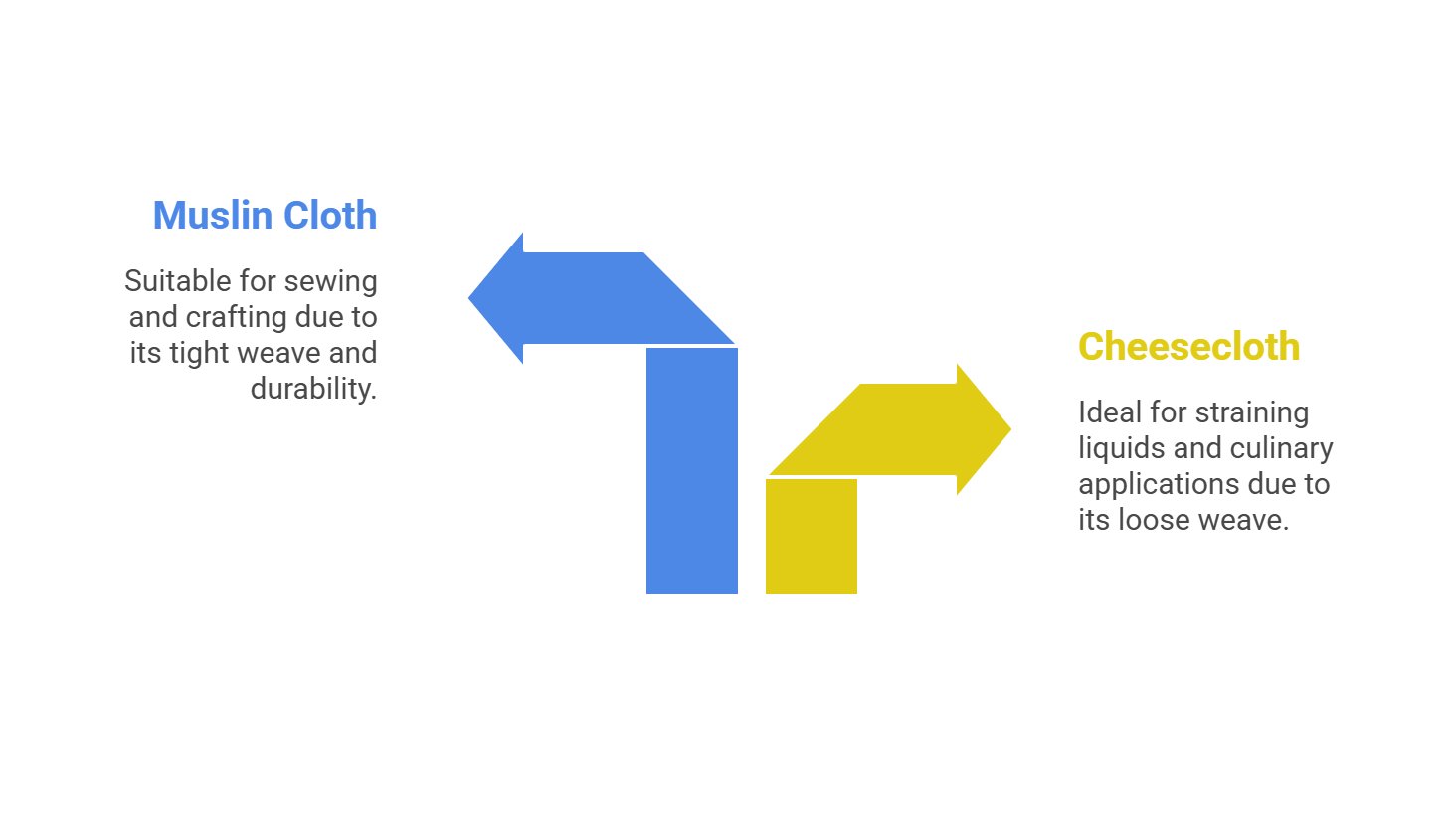
What’s the difference between muslin cloth and cheesecloth? While both are cotton fabrics with plain weaves, they serve different purposes.
Regular muslin is a lightweight cotton fabric that comes in various weights and thread counts. It’s commonly used for making baby swaddles, test garments in sewing, and light summer clothing. Muslin has a tighter, more consistent weave than cheesecloth.
Cheesecloth, on the other hand, is specifically designed with an open weave for straining and filtering. It’s much more loosely woven than standard muslin.
Think of it this way: all cheesecloth is a type of muslin, but not all muslin is cheesecloth. The key difference lies in how open the weave is and what the fabric is designed to do.
Kitchen and Cooking Applications
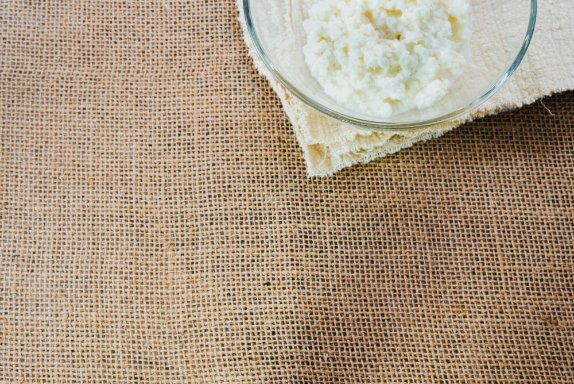
While cheesecloth started as a cheese-making tool, modern cooks use it for dozens of kitchen tasks. Here’s what you can do with it.
Cheese Making
This is what cheesecloth does best. Different cheeses need different approaches:
- Ricotta and Paneer: Use Grade 90-100 to catch the fine curds while letting whey drain
- Queso Fresco and Queso Blanco: Grade 90 works perfectly for these soft Mexican cheeses
- Cheddar, Gouda, Colby: Grade 50-60 lets moisture escape while the cheese forms
- Mozzarella: Grade 60-90 depending on your preferred moisture level
Straining and Filtering
You’ll use cheesecloth constantly for straining if you make things from scratch:
- Stocks and Broths: Get crystal-clear liquid by straining through Grade 60-90
- Nut Milks: Almond, cashew, or oat milk comes out smooth with Grade 90-100
- Yogurt: Transform regular yogurt into thick Greek yogurt or labneh
- Jams and Jellies: Remove seeds from berry mixtures
- Infused Oils: Strain out herbs and spices for clear, flavored oils
- Cold Brew Coffee: Get smooth coffee without sediment
Bundling and Wrapping
Cheesecloth keeps ingredients contained while letting flavors flow:
- Bouquet Garni: Tie herbs and spices in Grade 40-50 for easy removal from soups
- Spice Bags: Keep whole spices together in mulled drinks or pickling brines
- Basting Poultry: Soak cloth in butter or oil and drape over turkey or chicken to keep it moist
- Tofu Pressing: Wrap tofu blocks to absorb excess water
Baking Applications
Bakers rely on cheesecloth for several techniques:
- Slow Fermentation: Wrap bread dough in cheesecloth during long fermentation for artisanal crusts
- Fruitcake: Wrap cakes in rum-soaked cheesecloth while they age
- Proofing Baskets: Line banneton baskets to prevent sticking
Other Kitchen Tasks
- Making ghee (clarified butter)
- Straining custards for silky texture
- Covering rising dough
- Wrapping citrus halves to catch seeds when juicing
- Making homemade kombucha covers
Crafting and DIY Projects
Crafters love cheesecloth because it’s affordable, easy to work with, and takes dye beautifully. Here are popular craft applications:
Fashion and Clothing
Cheesecloth had a moment in fashion during the 1960s and 70s when it was popular for summer shirts and beachwear. Today, you can still make:
- Lightweight summer tunics and shirts
- Beach cover-ups
- Casual skirts
- Scarves and wraps
Home Décor
- Table Runners: Dye or paint for rustic table settings
- Window Treatments: Layer for gauzy, light-filtering curtains
- Ghost Decorations: The classic Halloween use for Grade 10
- Wedding Draping: Create ethereal backdrops and decorations
Art and Craft Projects
- Natural Dyeing: Cheesecloth absorbs dyes well
- Canvas Texture: Glue to canvas for textured painting backgrounds
- Printmaking: Use in lithography and intaglio processes
- Bookbinding: Reinforcement and decorative elements
- Tea Bags: Make reusable tea sachets
- Halloween Decorations: Create classic ghost decorations (see video below)
How to Make Cheesecloth Ghosts
Learn how to create classic Halloween cheesecloth ghosts using Grade 10 cheesecloth and Mod Podge Stiffy. This easy craft project is perfect for seasonal decorating.
Sewing and Embroidery with Cheesecloth
You can also embroider on cheesecloth fabric for decorative projects:
How to Embroider on Cheesecloth Fabric
This tutorial shows you how to add beautiful embroidery to cheesecloth and similar lightweight fabrics, perfect for personalizing baby items or creating decorative pieces.
Garden Applications
- Protect seedlings from pests while allowing sunlight through
- Cover fruit trees to keep birds away
- Wrap young tree trunks to protect from cicadas
- Create breathable covers for ripening fruits
Other Applications
Cheesecloth serves surprising purposes beyond kitchen and crafts:
Industrial and Technical Uses
- Product Safety Testing: Grade 60 cheesecloth is used in fire hazard testing to ensure electronic devices fail safely without starting fires
- Optical Testing: Military standard testing uses cheesecloth to test coating durability on lenses and optics
- Medical Settings: Sterilized cheesecloth can serve as temporary wound dressing in emergency situations
- Laboratory Work: Used in anatomical dissection labs to slow specimen desiccation
Is Cheesecloth Good Fabric for Everyday Use?
Is cheesecloth a good fabric? That depends on what you’re doing with it. For kitchen tasks, crafts, and its intended purposes, cheesecloth is excellent. It’s affordable, reusable, and works exactly as designed.
For clothing, it has limitations. Is cheesecloth fabric see through? Yes, most grades are quite sheer, which makes it unsuitable for most everyday garments. The fabric also wrinkles constantly and has a casual, rumpled appearance. If you like the relaxed, bohemian look and don’t mind the transparency, it works for summer cover-ups and beach wear.
Is cheesecloth good for summer? Absolutely. Is cheesecloth a breathable fabric? Very much so. The open weave allows excellent air circulation, making it one of the most breathable fabrics you can find. This is why it’s popular in hot climates like India and Pakistan for summer shirts.
What to Look For When Buying Cheesecloth
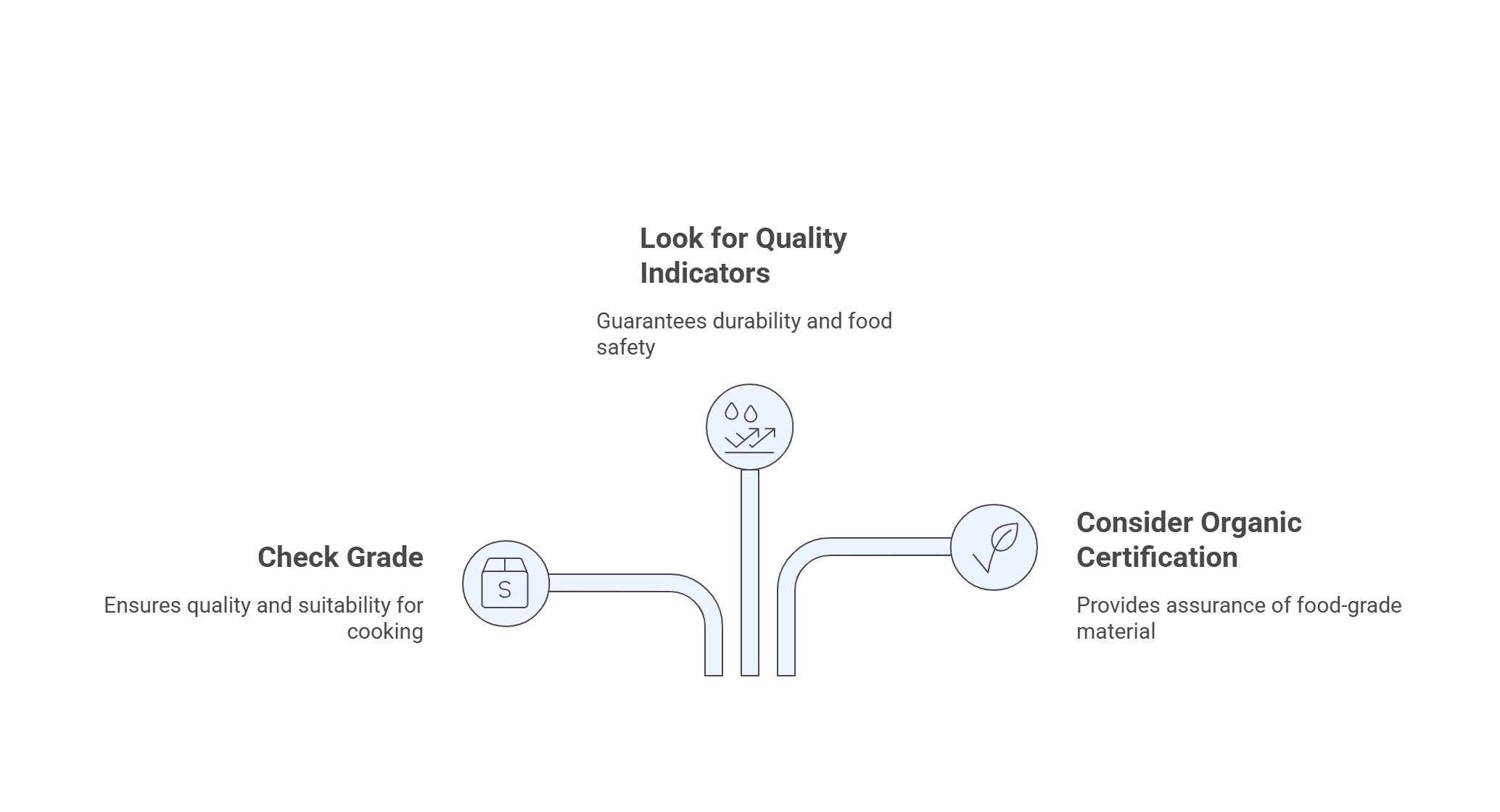
Not all cheesecloth is created equal. Here’s what you need to know before you buy.
Check the Grade First
Always look for the grade number on the package. If it doesn’t list a grade, you’re probably looking at very low-quality cheesecloth (likely Grade 10 or lower) that won’t work well for cooking.
Bleached vs. Unbleached
You’ll find both bleached and unbleached options:
- Unbleached (natural): Slightly off-white or cream colored, contains natural cotton oils, no chemical residues, can be composted when worn out
- Bleached: Bright white, chlorine-free, natural oils removed, slightly weaker fibers
For food use, unbleached is the better choice. It’s more natural and actually stronger since the bleaching process can weaken cotton fibers.
Look for Quality Indicators
- 100% cotton: Avoid synthetic blends for food use
- Hemmed edges: Prevent fraying and show better craftsmanship
- Consistent weave: No thin spots or irregular gaps
- Lint-free claim: Quality cheesecloth won’t shed into your food
- Organic certification: Worth the extra cost if you’re using it for food
How Much Should You Buy?
Cheesecloth typically comes in several package sizes:
- Single sheets: Usually 36″ x 36″, good for trying out or occasional use
- Multi-packs: 2-4 sheets, better value if you’ll use it regularly
- By the yard: Most economical for frequent users, typically 36″ wide
- Rolls: For commercial or very frequent use
Where to Buy Cheesecloth
Does Tesco sell cheesecloth? Does Woolworths sell cheesecloth? Most major grocery stores carry basic cheesecloth in the kitchen supplies or baking section, though the quality varies. You’ll find better selection and higher grades at:
- Kitchen supply stores
- Cheese-making suppliers (best quality)
- Online retailers
- Restaurant supply stores
- Fabric stores (for crafts and decorating, not cooking)
Is Cheesecloth Heat Resistant?
Cotton cheesecloth can withstand typical cooking temperatures (up to about 400°F/200°C), but it will burn if exposed to direct flame or extremely high heat. It’s safe for basting poultry in the oven, wrapping foods for steaming, and similar cooking applications. Just don’t let it touch heating elements or open flames.
Complete Care and Cleaning Guide
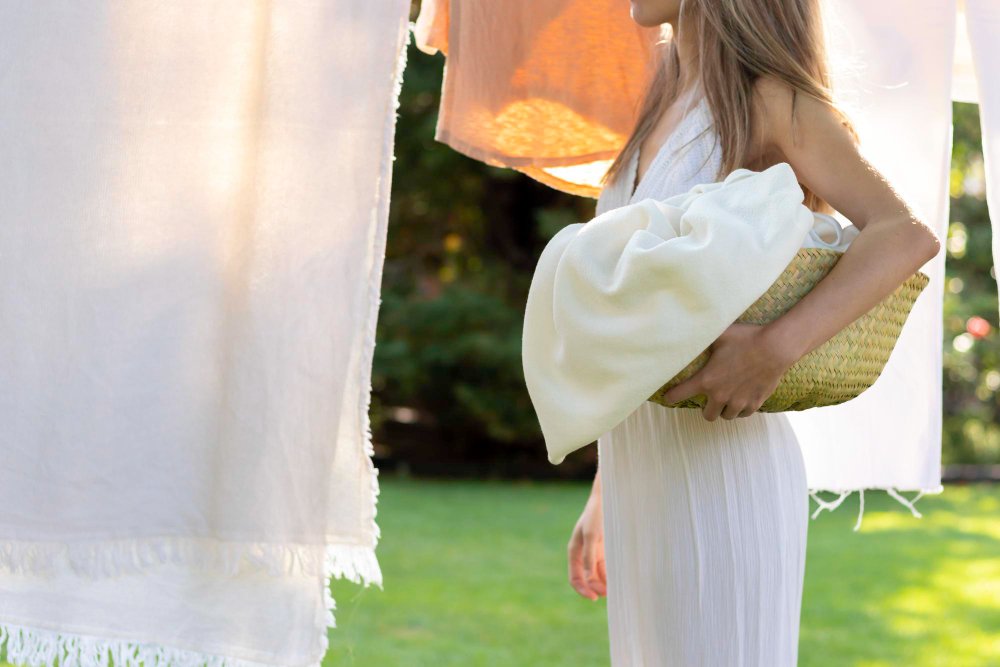
Proper care extends the life of your cheesecloth dramatically. With good maintenance, Grade 90 cheesecloth can last through 30-50 uses or more.
Can You Wash Cotton Cheesecloth?
Yes, absolutely. Is cheesecloth reusable? High-quality cheesecloth (Grade 60 and above) is designed to be washed and reused many times. Lower grades may only last a few uses before the weave loosens too much.
How to Wash Cotton Cheesecloth: Step-by-Step
- Rinse Immediately: As soon as you finish using it, rinse under cold running water. Cold water prevents food particles from setting into the fibers. Scrub gently with your hands to remove stuck bits.
- Soak in Baking Soda: Fill a bowl with warm water and add half a cup of baking soda. Submerge the cheesecloth and let it soak for 30 minutes. This removes odors and loosens remaining particles.
- Machine Wash or Hand Wash: Place in a mesh laundry bag to prevent tangling. Wash with hot water and mild, unscented detergent on the delicate cycle. You can also hand wash in a sink with hot, soapy water.
- Boil for Sterilization: For maximum cleanliness (especially important for cheese making), boil the cheesecloth in a pot of water for 5 minutes. This kills any lingering bacteria and ensures it’s safe for your next use.
- Rinse Thoroughly: Give it a final cold water rinse to remove all soap residue.
- Dry Properly: Wring out excess water gently. Hang to air dry in a well-ventilated area, or tumble dry on low heat. Remove promptly from the dryer to prevent over-drying. Avoid high heat as it weakens cotton fibers.
- Store Correctly: Once completely dry, fold and store in a clean, dry place. A ziplock bag works well to keep it dust-free until next use.
How Many Times Can You Reuse Cheesecloth?
The answer depends on the grade and how you care for it:
- Grade 10-40: 3-10 uses before the weave becomes too loose
- Grade 50-60: 15-30 uses with good care
- Grade 90-100: 30-50+ uses, sometimes lasting years
Alternative Cleaning Method for Quick Tasks
For simple straining tasks where food safety isn’t critical (like straining cold brew coffee), you can use a simpler approach:
- Rinse immediately under hot water
- Scrub with dish soap
- Rinse thoroughly until water runs clear
- Hang to dry
When to Replace Your Cheesecloth
Time for new cheesecloth when you notice:
- Visible thinning or holes
- Persistent odors that won’t wash out
- Stains that won’t come out (stains don’t affect function but may indicate worn fibers)
- Excessive fraying at edges
- Weave has stretched and loosened significantly
Is Cotton Cheesecloth Compostable?
Yes, 100% cotton cheesecloth is fully compostable and biodegradable. When it’s worn out, cut it into smaller pieces and add to your compost bin. It will break down naturally. This is another reason to choose unbleached, organic cheesecloth when possible.
Cheesecloth Substitutes and Alternatives
Don’t have cheesecloth on hand? What is the closest thing to cheesecloth? Several common household items work in a pinch.
Best Substitutes Ranked
1. Unbleached Muslin (Best Overall)
Can I use cotton cloth instead of cheesecloth? Can I use linen instead of cheesecloth? Regular unbleached muslin fabric is actually better than cheesecloth for many tasks. It’s more durable, reuses better, and has a tighter weave. Perfect for straining stocks, making nut milk, and pressing tofu. The only downside is it drains slightly slower than cheesecloth.
2. Coffee Filters
Both paper and reusable cloth coffee filters work for small straining jobs. Use several stacked together for better filtration. Not suitable for high-volume tasks or anything requiring wringing.
3. Clean Cotton T-Shirt
Can you use a t-shirt as cheesecloth? Yes. A clean, white cotton t-shirt (worn soft works best) makes an excellent emergency substitute. Cut it into squares and use for straining, wrapping, or filtering. Wash thoroughly first.
4. Nut Milk Bags
These purpose-made bags are actually better than cheesecloth for making plant-based milks. They’re thicker, stronger, and easier to squeeze. Also great for juicing and sprouting.
5. Medical Gauze
Is gauze fabric the same as cheesecloth? They’re similar but gauze is usually thinner. Sterile medical gauze works in a pinch. Use several layers stacked together to create thickness similar to cheesecloth. Make sure you restock your first aid kit after.
6. Clean Kitchen Towels
Thin cotton dish towels or flour sack towels work for larger straining jobs. They’re much more durable than cheesecloth but may retain odors more easily.
7. Paper Towels (Last Resort)
Not ideal because they can break apart and leave lint in your food, but they work for emergency straining of small amounts. Use several layers and be gentle.
Other Options
- Cloth diapers: New, unused cloth diapers are often made from muslin and work well
- Linen fabric: Higher thread count linen can substitute for cheesecloth
- Fine mesh bags: Like produce bags, good for straining larger items
- Cotton handkerchiefs: Use undyed, plain cotton
- Pillowcases: Clean cotton pillowcases work for large-volume straining
- Cotton voile: This lightweight cotton fabric has a finer weave and works similarly
Troubleshooting Common Problems
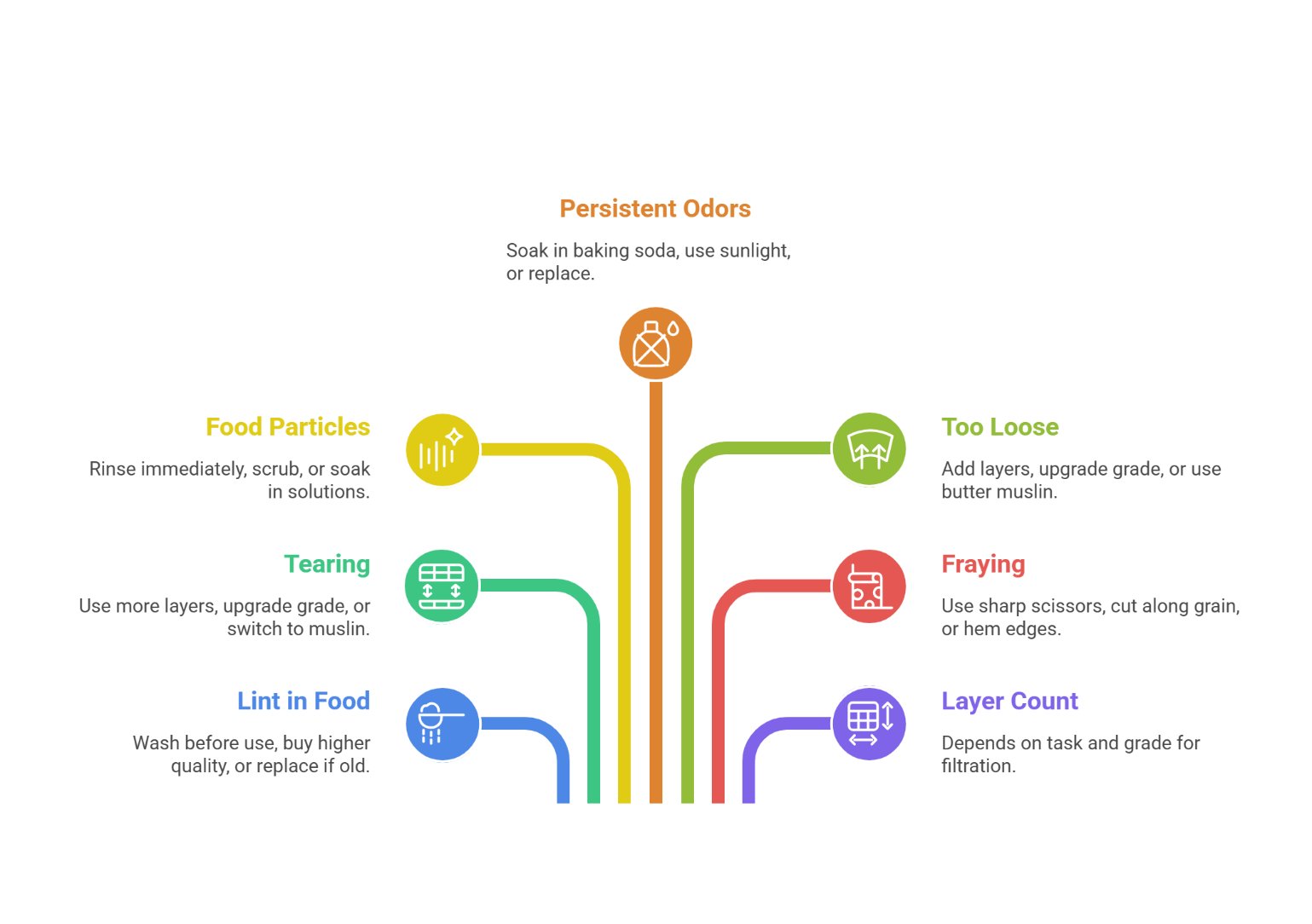
Running into issues with your cheesecloth? Here are solutions to common problems.
Problem: Cheesecloth is Leaving Lint in My Food
Solutions:
- Wash new cheesecloth before first use to remove loose fibers
- Boil it once before using with food
- Buy higher quality cheesecloth (Grade 90+)
- Stop using it if it’s old and breaking down
Problem: It Tears When I Squeeze or Wring It
Solutions:
- Use two layers for extra strength
- Upgrade to a higher grade
- Twist gently rather than wringing hard
- Support the bottom of the bundle while squeezing
- Switch to muslin or a nut milk bag for tasks requiring heavy pressure
Problem: Food Particles Won’t Come Out During Washing
Solutions:
- Rinse immediately after use (don’t let it dry with food on it)
- Use an old toothbrush to scrub stubborn spots
- Soak longer in baking soda water (up to 2 hours)
- Try a vinegar soak (1/4 cup vinegar per gallon of water)
- Boil for 10 minutes instead of 5
Problem: Persistent Odors After Washing
Solutions:
- Soak in baking soda solution overnight
- Hang in direct sunlight for several hours (UV kills odor-causing bacteria)
- Add white vinegar to the rinse cycle
- Boil with a slice of lemon
- If odors persist, it’s time to replace it
Problem: Cheesecloth is Too Loose for My Task
Solutions:
- Double or triple layer it
- Switch to a higher grade
- Use butter muslin instead
- Fold it multiple times
Problem: How to Cut Cheesecloth Without Fraying
How to cut cheese cloth properly:
- Use sharp fabric scissors (dull scissors make fraying worse)
- Cut along the grain when possible
- For a cleaner edge, tear along the grain instead of cutting
- If you need finished edges, hem with a basic hem stitch or use a serger
- For crafts, apply fray check solution to cut edges
Problem: How Many Layers of Cheesecloth to Use?
The number of layers depends on what you’re making:
- One layer: Grade 90+ for most tasks, bundling herbs
- Two layers: Lower grades (40-60) for cheese making, general straining
- Three layers: Grade 40 or lower, when you need very fine filtration
- Four layers: Only needed with very loose weave (Grade 10-20) or for maximum clarity
Frequently Asked Questions
Wrapping Up
Cheesecloth is one of those humble kitchen tools that does far more than its name suggests. While it started as a specialized fabric for cheese making back in the 1650s, it has evolved into a versatile material used in cooking, crafting, gardening, and even industrial applications.
The key to getting the most from cheesecloth is understanding the grading system and choosing the right type for your needs. Remember that higher grade numbers mean tighter weaves and more threads per inch. Grade 90 offers the best all-around performance for kitchen tasks, lasting through dozens of uses with proper care.
Whether you’re making homemade ricotta, straining stock for a crystal-clear broth, crafting Halloween decorations, or protecting your garden seedlings, there’s a grade of cheesecloth perfect for the job. The fabric’s breathability, food safety, and reusability make it an essential tool that belongs in every kitchen and craft room.
Key Takeaways
- Choose the right grade: Grade 90 for soft cheeses and fine straining, Grade 50-60 for hard cheeses and general use, Grade 10-40 for crafts and decorations
- Buy quality: Look for 100% cotton, hemmed edges, and specific grade labeling. Avoid generic fabric store cheesecloth for cooking
- Know the difference: Butter muslin has a tighter weave than cheesecloth and works better for soft cheeses and fine filtering
- Care properly: Rinse immediately, soak in baking soda, wash with hot water, and boil to sterilize. Quality cheesecloth lasts 30-50+ uses
- Have alternatives ready: Unbleached muslin, nut milk bags, and clean cotton t-shirts make excellent substitutes in a pinch
- Consider compostability: When your cheesecloth wears out, you can compost it since it’s 100% cotton and biodegradable
Next Steps
Ready to start using cheesecloth? Here’s what to do:
- Identify your primary use (cheese making, straining, crafts) and choose the appropriate grade
- Look for quality indicators: 100% cotton, proper grade labeling, and preferably unbleached
- Start with a small amount to test before buying in bulk
- Set up a proper care routine from day one to maximize reusability
- Experiment with different applications beyond your original purpose
With this complete guide, you now have everything you need to choose, use, and care for cheesecloth like a pro. Whether you’re a home cook exploring cheese making, a crafter looking for the perfect lightweight fabric, or simply someone who wants crystal-clear homemade stock, cheesecloth will quickly become an indispensable tool in your arsenal.
For more information on cotton fabrics and their uses, explore our other guides on fabric care and sewing techniques.
Helpful Tools and Resources
Looking for more help with fabric care and selection? Check out these free interactive tools:
- Fabric Care Calculator – Get personalized washing instructions for your fabrics
- Cotton Care Calculator – Smart fabric care recommendations specifically for cotton
- Fabric Selector Tool – Find the perfect fabric for any project
References
- Cultures for Health. (2023). Cheesecloth and Butter Muslin in Home Cheesemaking
- Wikipedia. (2025). Cheesecloth
- Cabot Creamery. (2024). What Is a Cheesecloth? Uses, Substitutes, & More

